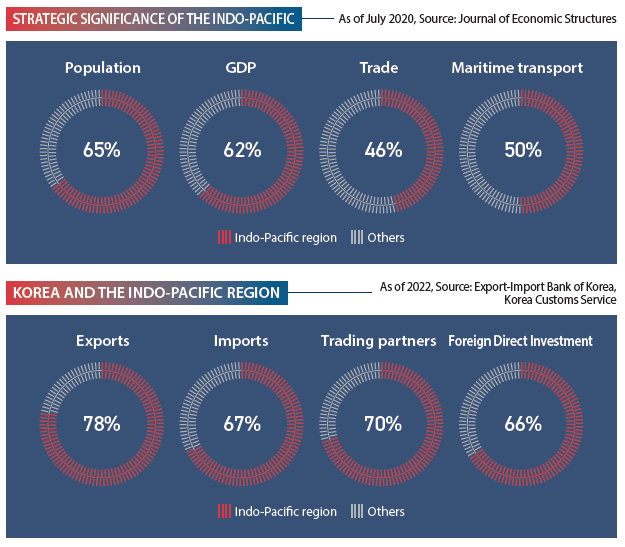The following is the December Republic of Korea’s Strategy for a Free, Peaceful and Prosperous Indo-Pacific Region.
From the report
The Republic of Korea is an Indo-Pacific nation. Our national interests are directly tied to the stability and prosperity in the region. Home to 65% of the world population, the Indo-Pacific accounts for 62% of the world’s GDP, 46% of international trade, and half of global maritime transport. It is also an economically and technologically dynamic region where our key partners of strategic industries such as semiconductors are located.

In recognition of the strategic importance of the Indo-Pacific, countries around the globe have increased engagement with the region and are putting forth their respective Indo-Pacific strategies. The Republic of Korea began to formulate its own Indo-Pacific Strategy with the inauguration of the Yoon Suk Yeol administration. Korea’s comprehensive regional strategy encompassing the realms of the economy and security will enhance the predictability of its foreign policy and expand room for strategic action.
A strong democracy with a developed economy, Korea’s next leap forward depends on a peaceful and stable Indo Pacific. This is because the growth of our open economy relies heavily on exports, as indicated by the fact that foreign trade accounted for approximately 85% of our GDP in 2021. Particularly, the Indo-Pacific represents approximately 78% and 67% of our total exports and total imports, respectively. The fact that the majority of our top 20 trading partners are located in the Indo-Pacific and that 66% of our foreign direct investment is destined for the Indo-Pacific clearly reflect our close ties with the region.
The Indo-Pacific region is also home to many key strategic shipping routes. Most of our trade depends on sea lines of communication, with a significant portion going through the Strait of Hormuz, the Indian Ocean, the Malacca Strait, and the South China Sea. In particular, the South China Sea is a key sea route, accounting for around 64% and 46% of our crude oil transport and natural gas transport, respectively.
Download the document here.





